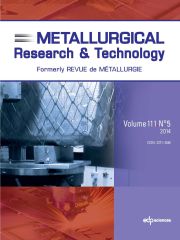Article contents
Cooperation and competition among structural materials
Published online by Cambridge University Press: 11 April 2013
Abstract
Materials have been invented by mankind in the course of prehistory and history and have evolved during this long period of time to fit the parallel changes in technological epistemes. Materials, therefore, have been a cumulative technological commodity, because of the continuity that this mechanism of change has ensured Structural materials, of which all anthropogenic artefacts are made and with which they are made (machines, process tools, etc.), have been more especially enduring and have carved themselves specific roles in our world that survive across major paradigm shifts and Kondratief cycles. Materials are analyzed here in terms of their physico-chemical nature (or physio-chemical in the case of natural, renewable materials) and of their footprints on energy consumption and greenhouse gas emissions, two of the major lenses through which the sustainability of our economic world is presently observed. The picture that comes out of this examination is that of complementarity and cooperation between materials, with competition acting as a sting to avoid a slack in technology but no pushing any of them out of their market, at least globally. This cohabitation, akin to a natural selection mechanism in a global ecosystem, may be the real driver of dematerialization, a trend which population growth and urbanization forces on mankind.
Information
- Type
- Research Article
- Information
- Metallurgical Research & Technology , Volume 110 , Issue 1: Social Value of Materials , 2013 , pp. 95 - 129
- Copyright
- © EDP Sciences 2013
References
- 6
- Cited by

